We live different lives in hotel rooms. Some of them aren’t even ours.
We brush our teeth in mirrors that have seen far too many tired, disappointed, or enthusiastic faces. We leave clothes draped over chairs we wouldn’t dare clutter at home. Hotel rooms give us temporary permission to exist slightly off-script — and maybe a bit out of character.
I’m writing this from a hotel in Baja California, Mexico, where the sun checks out early and the streets quiet down fast — pushing me to spend more time indoors than I’d usually allow. This room will vanish quickly from memory, eclipsed by the pink-blue sunsets, and the desert cacti standing so perfectly spaced it’s like someone arranged them for a postcard photoshoot.
There have been many rooms over the years — for love, for work, for escape, and quite a few for layovers between versions of myself. The interiors blur. But the moods stick.
Like eating “the best Margarita in the world” on a Neapolitan balcony. Or hauling grilled seafood from the market to a Marrakech hotel rooftop with my friend and mint tea poured from dangerously ambitious heights. Not being able to fall asleep — sometimes because the sky was too full of stars, and sometimes because Italians wouldn’t stop celebrating their Euro Cup win.
Waking up to the ocean before remembering which continent I was on. Kittens sneaking into our morning room on a Greek island. Pomegranate trees saying hi when I opened the door on another. Anniversary breakfast with my parents on an Amalfi terrace. Coffee lit by Lake Geneva’s light, falling through green shutters onto chairs that felt suspiciously Van Gogh-ish.
Same lake room where my then-partner chose to sleep on the floor instead of sharing the bed — redefining intimacy in one bold move. Or another gem where he stopped speaking to me entirely midway through our vacation — which wouldn’t be quite so poetic if it hadn’t happened in an all-inclusive resort (romance with no escape).
We all have our stories. Hotel rooms become little stages — sometimes for freedom, sometimes for loneliness, sometimes for love or grief. And a fair number of us like to peek behind the scenes, especially when the door is left open. Sophie Calle, of course, walked right in.
Sophie Calle: Checking In to Other People’s Secrets
For her series The Hotel (1981), Calle took a job as a chambermaid in a Venetian hotel. Her real intention? To investigate. For three weeks, she documented the lives of strangers through the objects they left behind. She opened anything that wasn’t locked, photographed it, and took notes like a forensic romantic: Two Italian women, a truck driver and a sales clerk, arrived with three porn magazines, two sets of pajamas, and one Teddy bear.
Her project blurred lines between voyeurism, anthropology, and autobiography. She wasn’t chasing scandal — she was chronicling vulnerability, the quietly absurd ways people live when they think no one’s watching.
It wasn’t Calle’s first brush with beds. In The Sleepers (1979), she invited 28 friends and strangers to sleep in her bed over eight nights, each in shifts, while she observed and documented them. A prelude to the hotel project — and a question: Would you accept the artist’ invitation?
Decades later, at the 2007 Venice Biennale, Calle turned her own heartbreak into a kind of conceptual group therapy. After receiving a breakup letter from her boyfriend (yes, that kind of letter), she invited 107 women — from actors and lawyers to a parrot trainer — to interpret the letter in their own voice and discipline. Take Care of Yourself was a glorious, brilliant autopsy of modern relationship communication. And, maybe, a masterclass in turning pain into power.
Nan Goldin: What Happens in the Room, Stays in the Photograph
Other artists have been drawn to hotel life, too. Nan Goldin photographed hotel rooms not for their decor, but for the raw human stories within them. Hotel moments that feel too close and too far at once. Her photographs caught love, loss, sex, sadness — all staged around night lamps and cheap wallpaper.
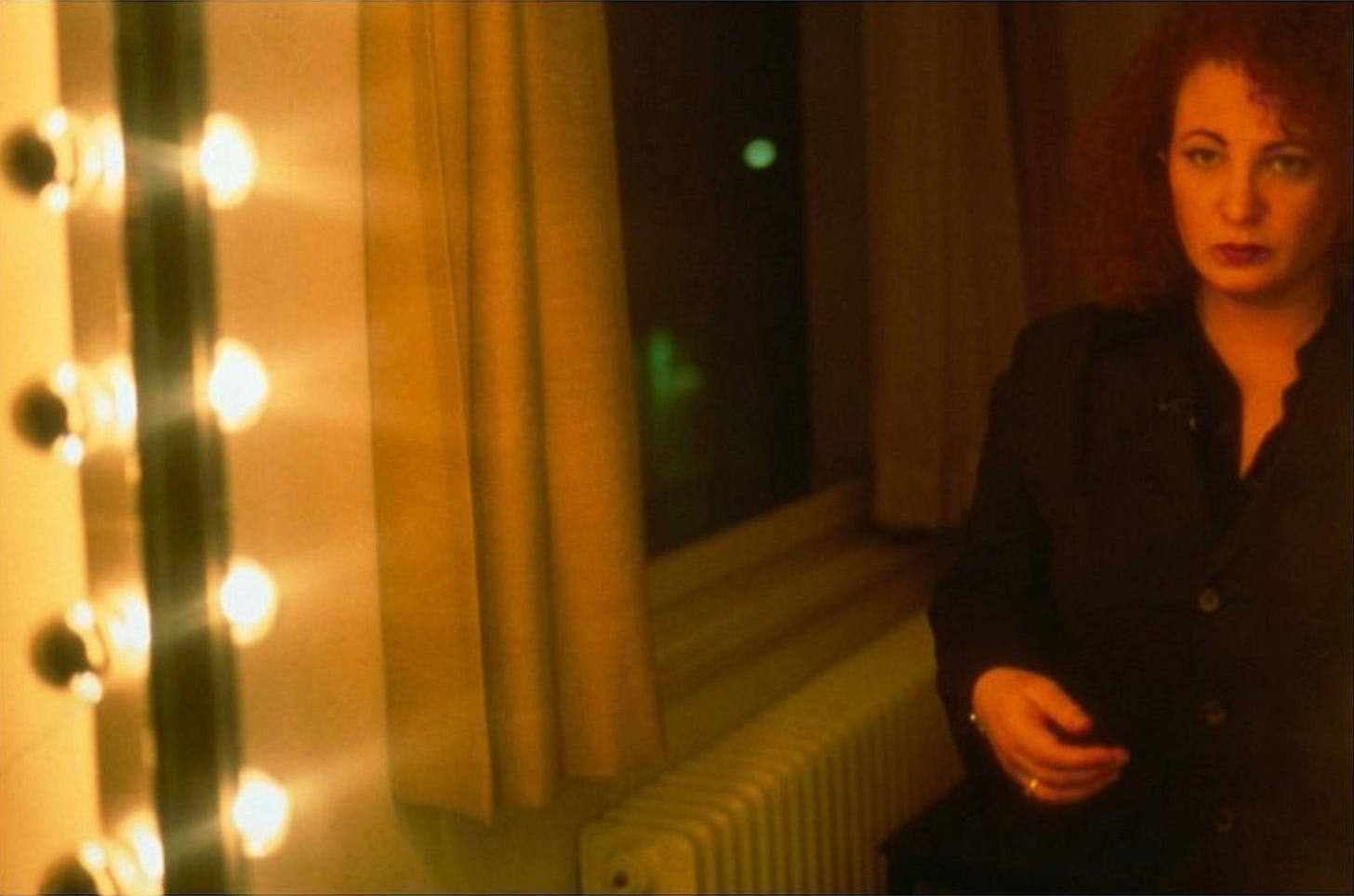
While Goldin’s protagonists often lay on beds because, well, the bed is the room, and that’s where everything happens, Tracy Emin made a real deal of it in My Bed (1998).
Tracey Emin: Big Pain, Big Check
After spending four days in bed during a depressive episode in her relationship, Emin preserved the result: crumpled sheets, empty vodka bottles, underwear, and cigarettes, and a few more things not suitable for a breakfast crowd.
Critics cried “anyone could do that.” Emin clapped back: “Well, they didn’t, did they?” It was shortlisted for the Turner Prize and eventually sold for £2.5 million. (If that still doesn’t convince you, head to this essay where I am writing about why we all think we could do it and to what I wrote about Turner Prize on insta).
All of these artists — Calle, Goldin, Emin — knew that a hotel room, or even just a bed, isn’t neutral. It’s can be a pressure cooker. A reflective pool for the things we carry.
When we check out, we take most of ourselves back with us — but not all. We leave behind a receipt, a hairpin, a little mood. The room resets. Someone else walks in. And the performance begins again. With a guest who gets to play the version of herself she hasn’t been yet. So, which hotel stories did you pack with you and which were locked in the mini fridge? I’m not saying I want to know… but if you do comment, this room doesn’t have cameras and I promise I won’t charge your card.
Art needs more eyes — and so does this blog. It’s free to read, but only grows if it travels.
❤️ Tap the heart 💬 Drop a line in the comments 🔁 Re-stack or share with a curious friend 📸 Instagram works too. Choose paid subscription to donate if you feel like. Thank you!




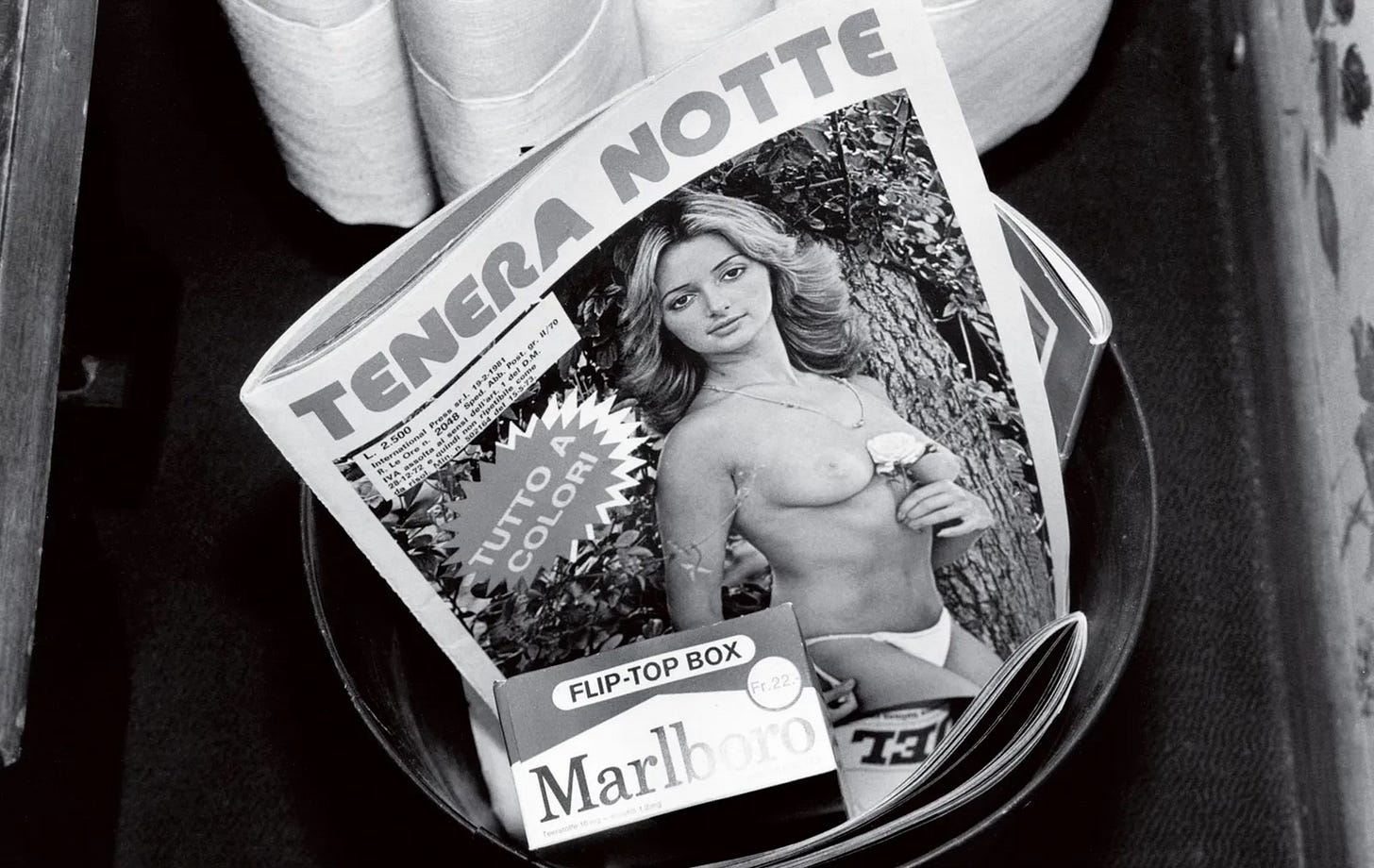
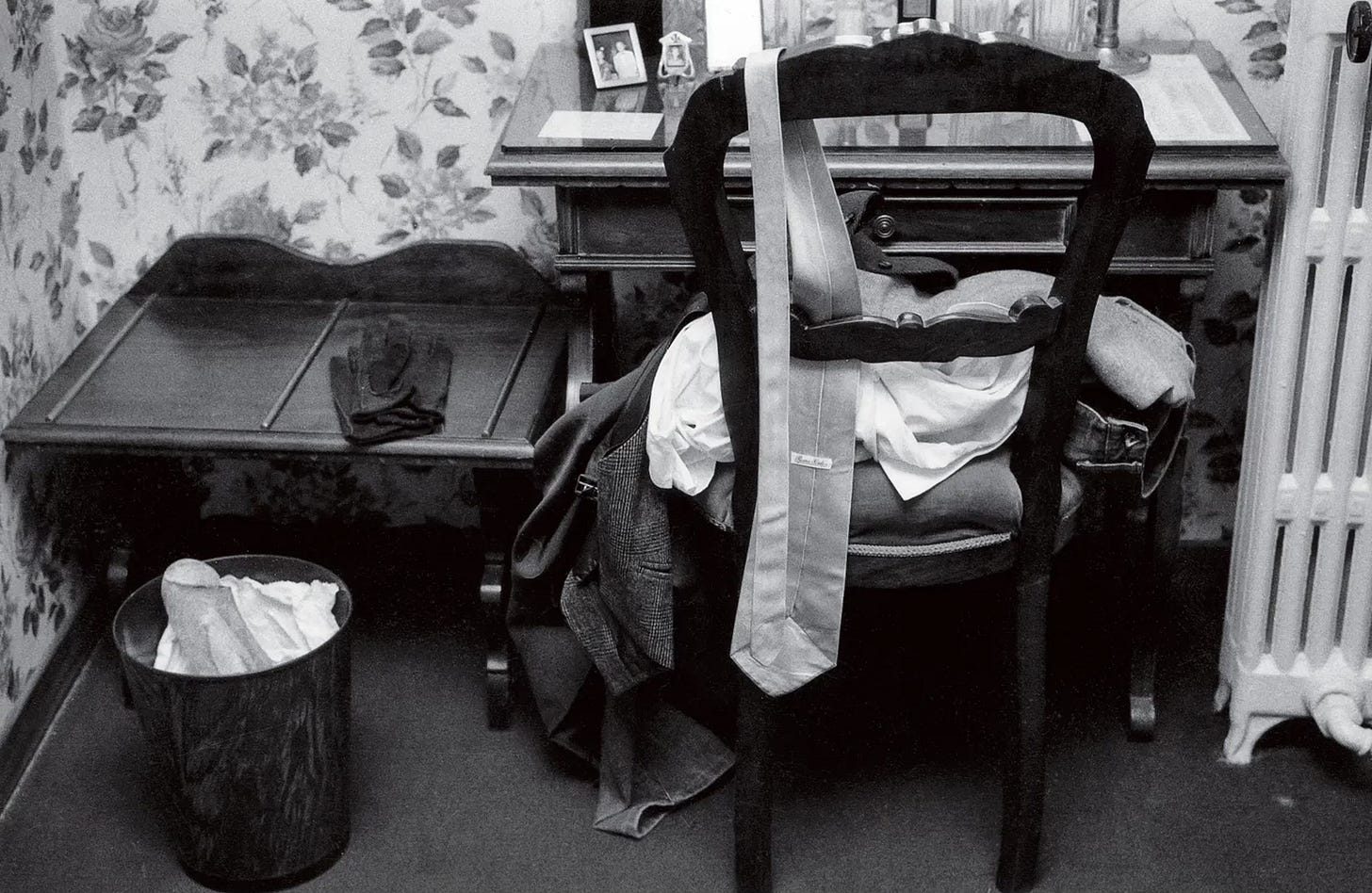
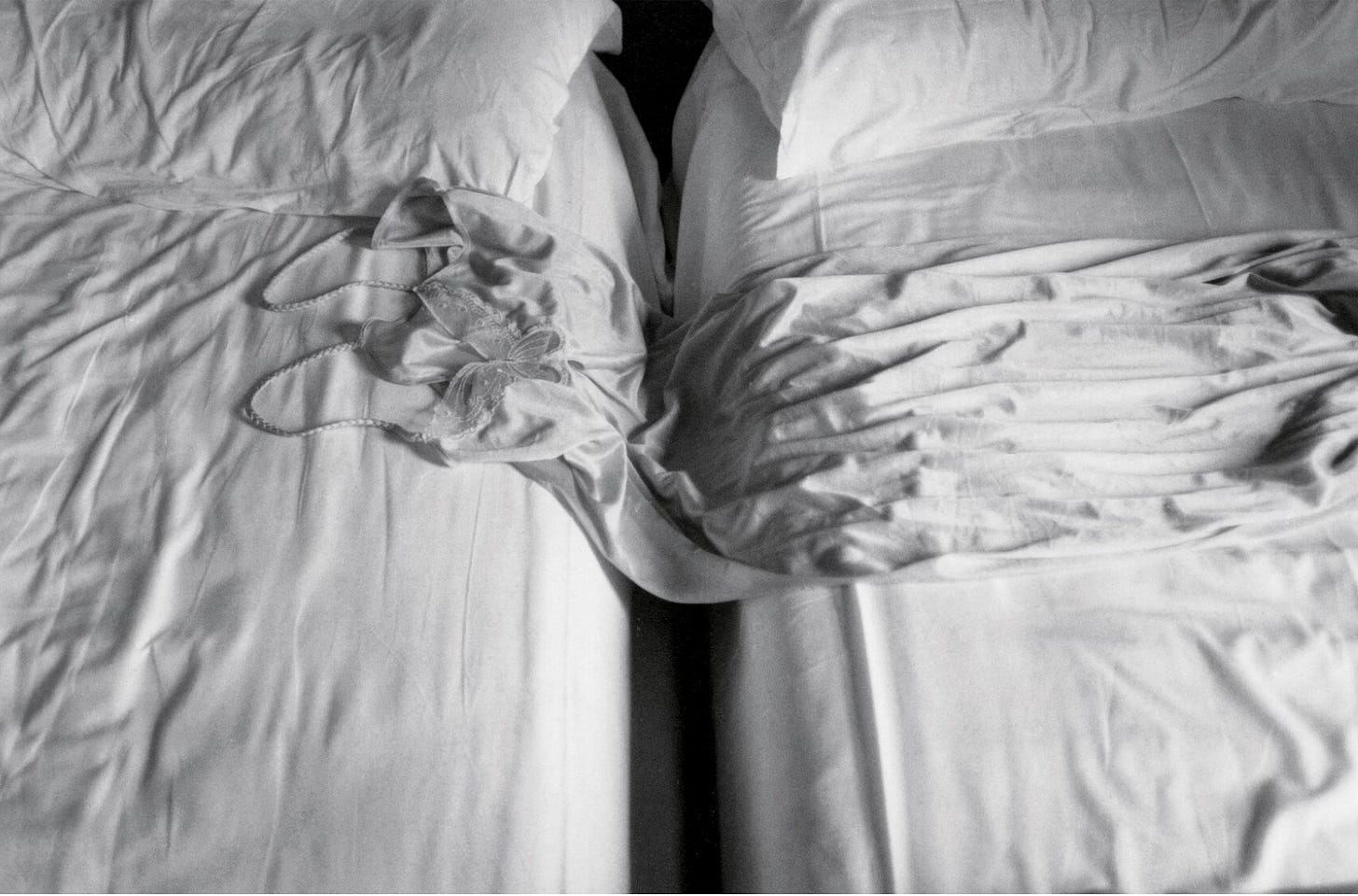
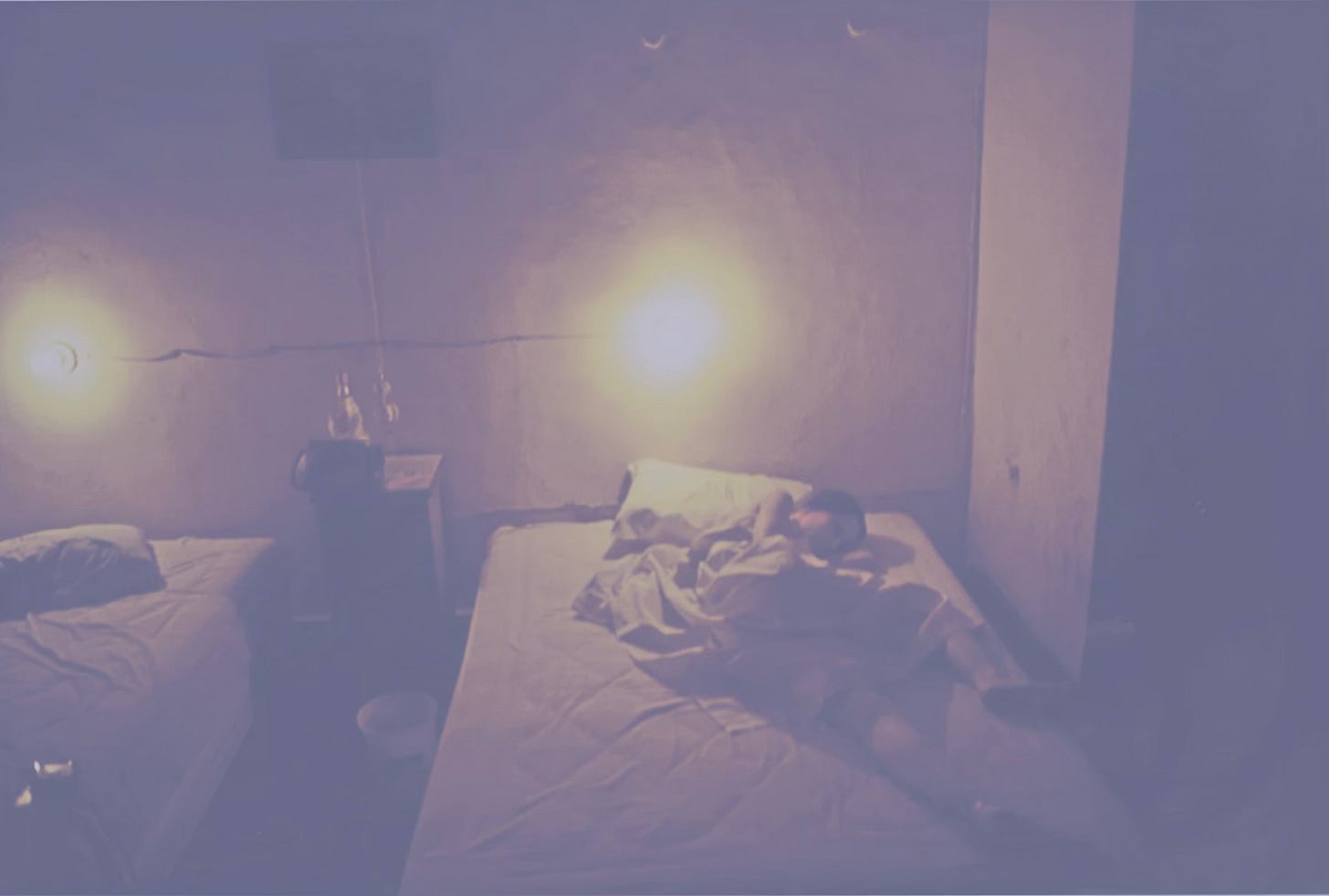
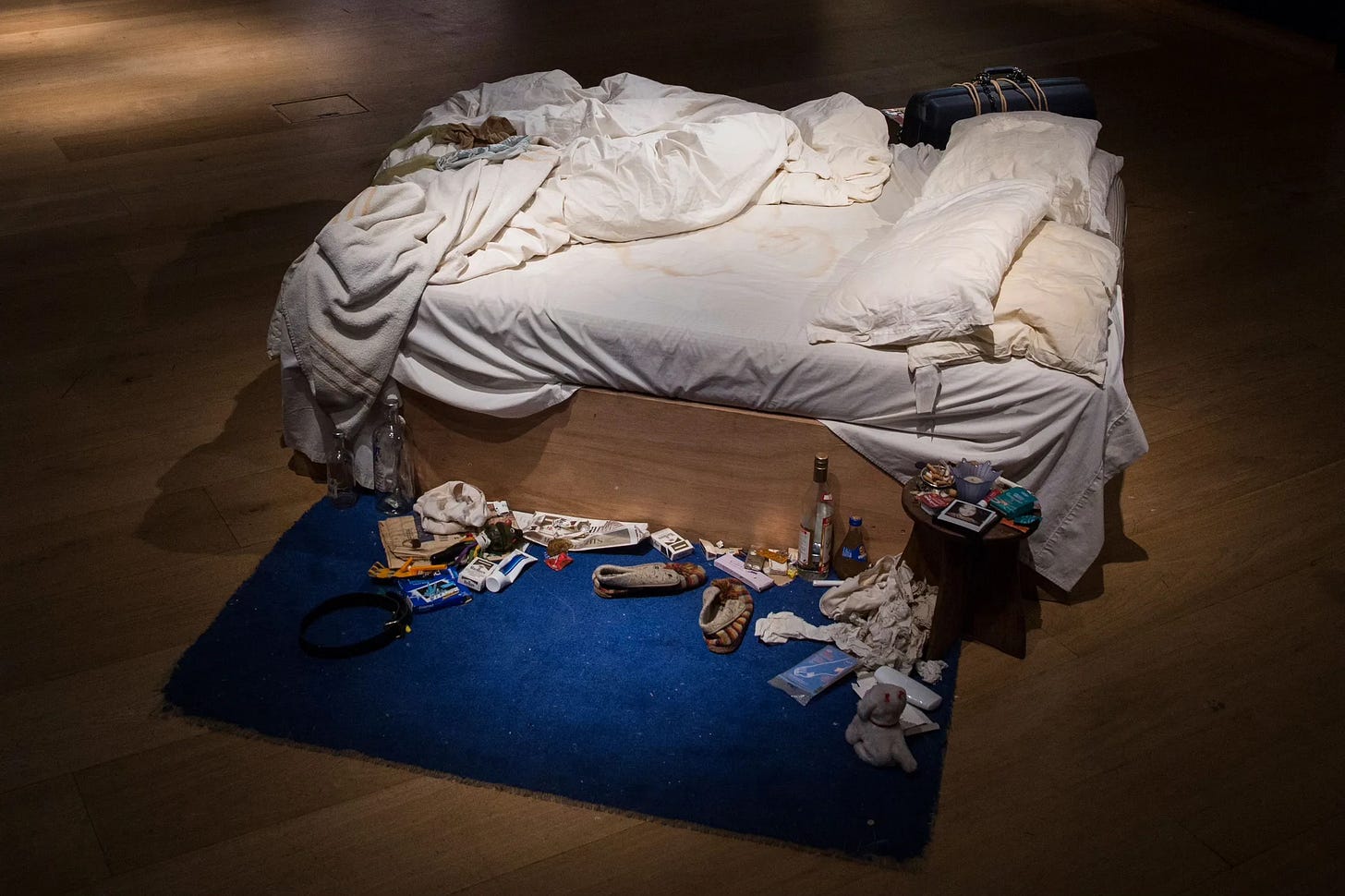
Nice to be part of your story! Remembered that rooftop of our riad in Marrakech. It is priceless to be able to share your memories. I also had a special time in Baja California. Enjoy 🫶